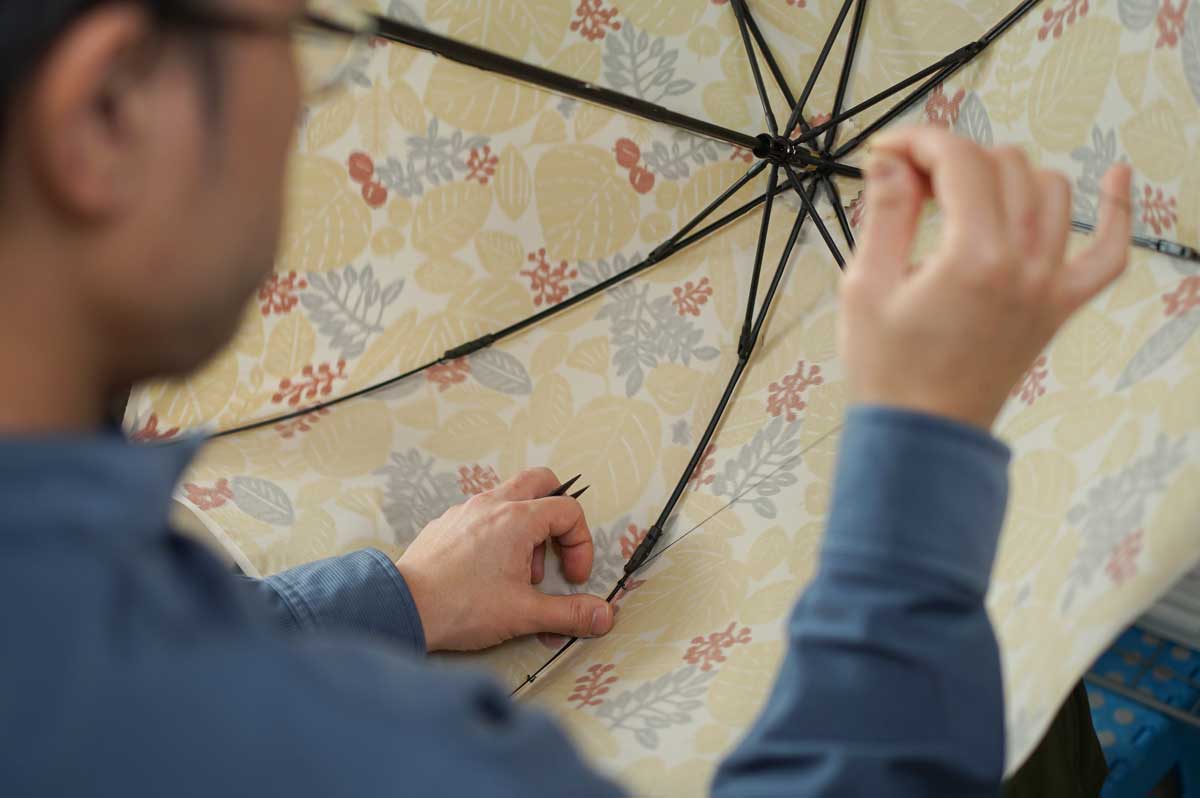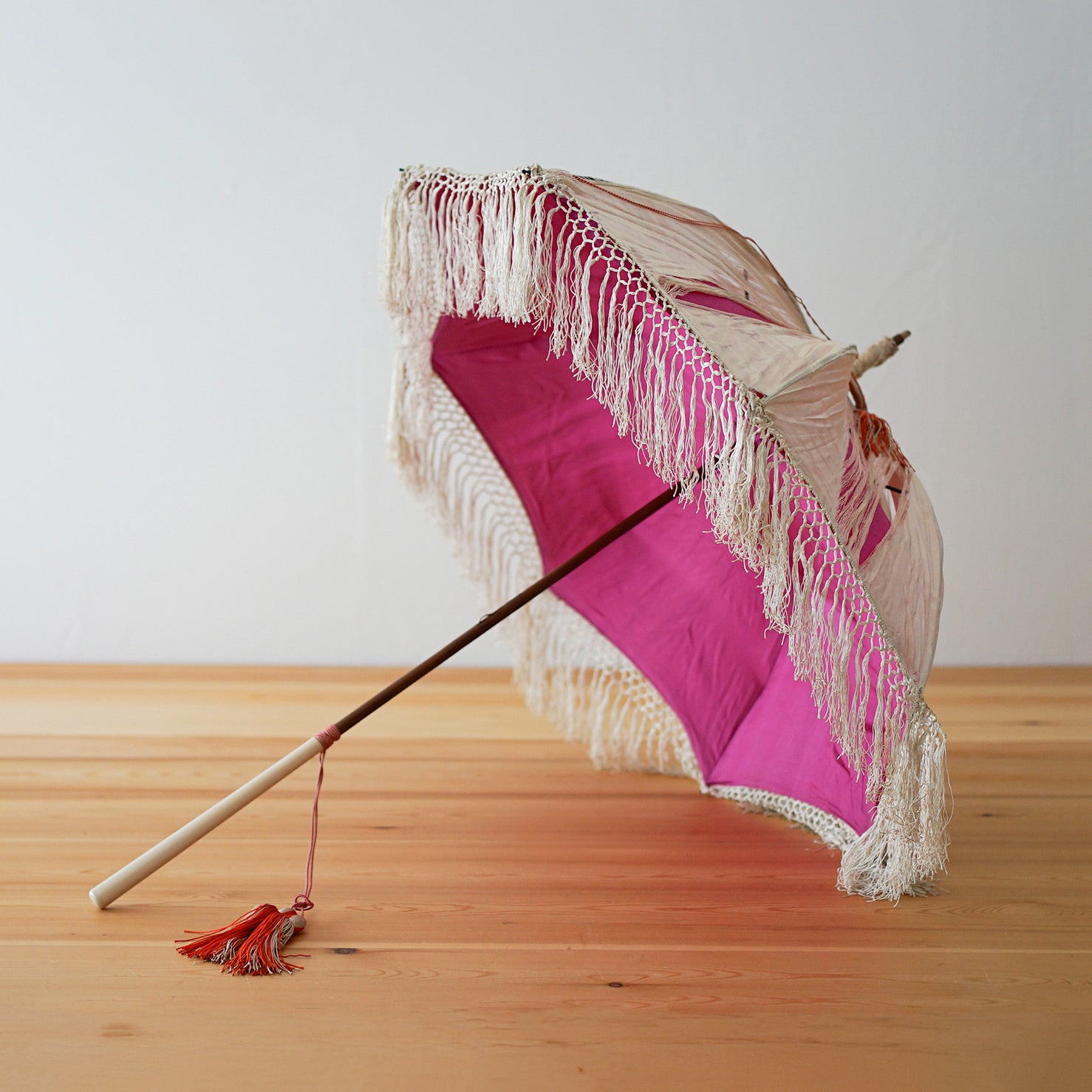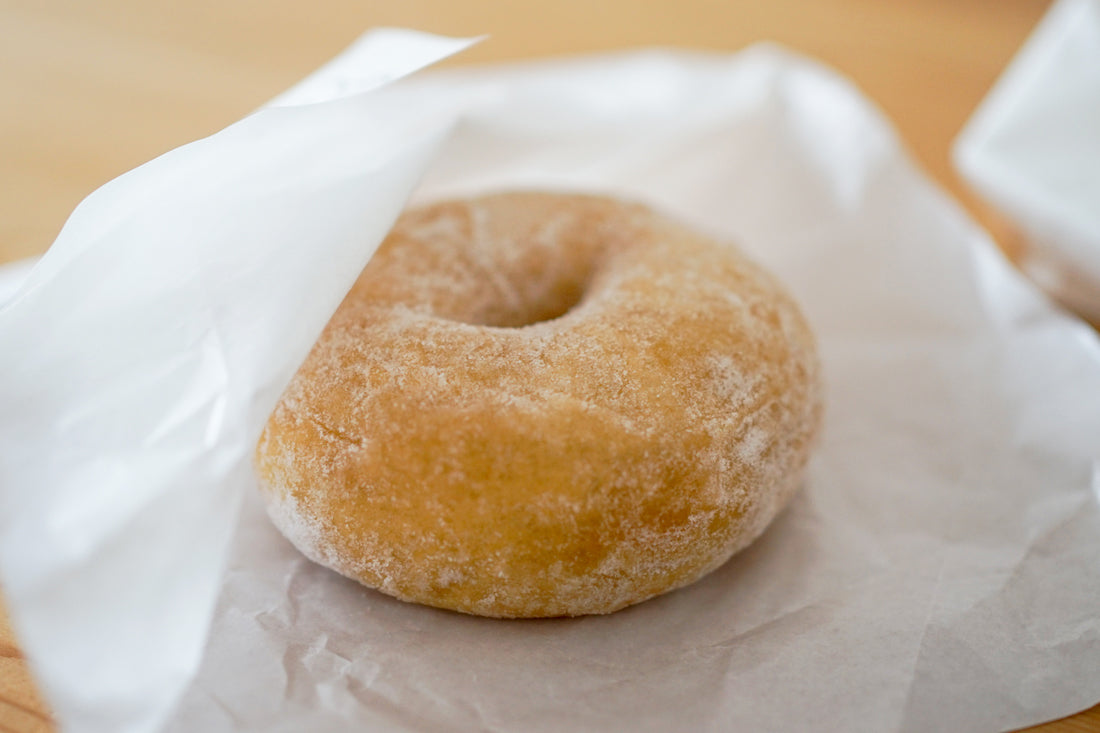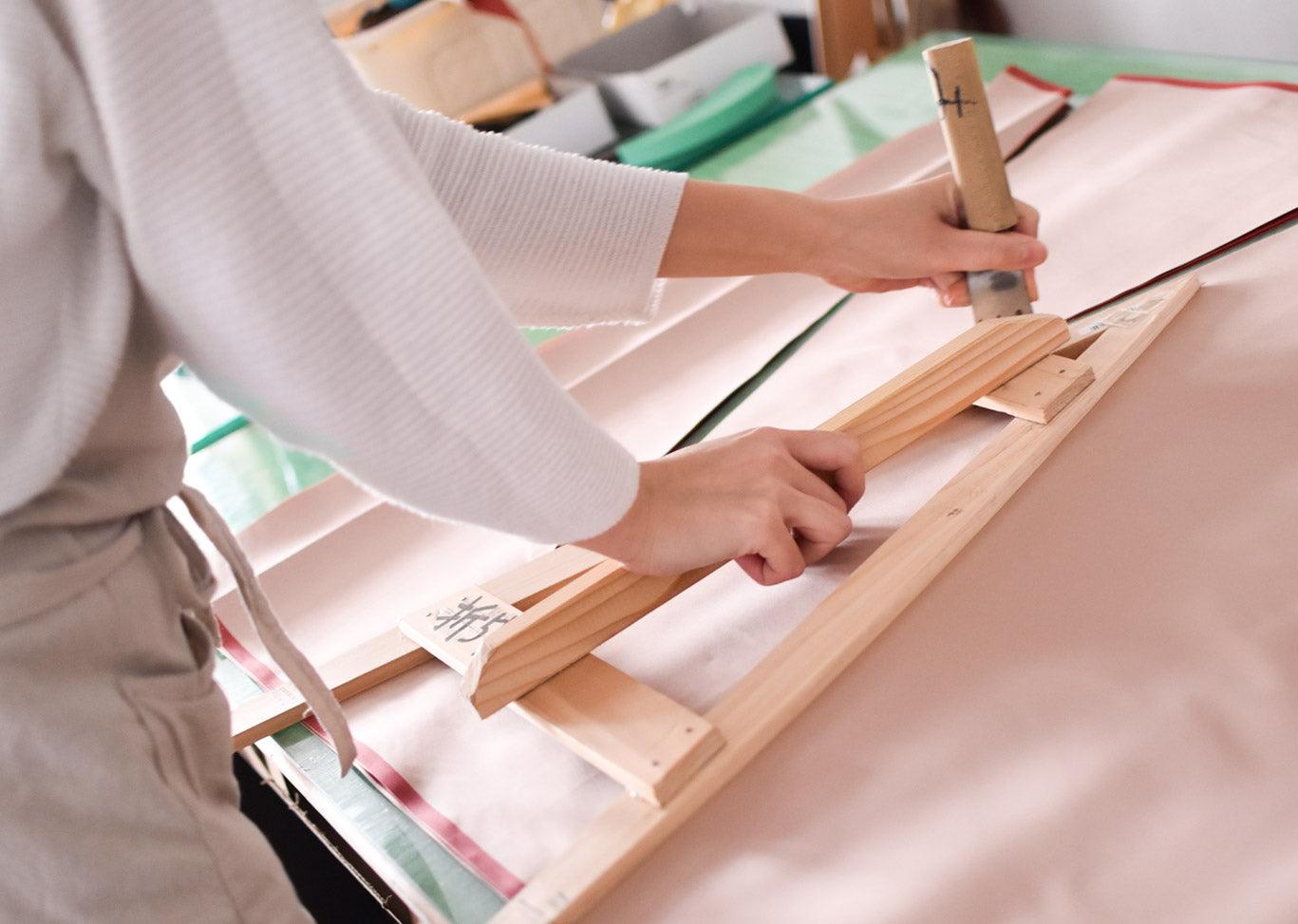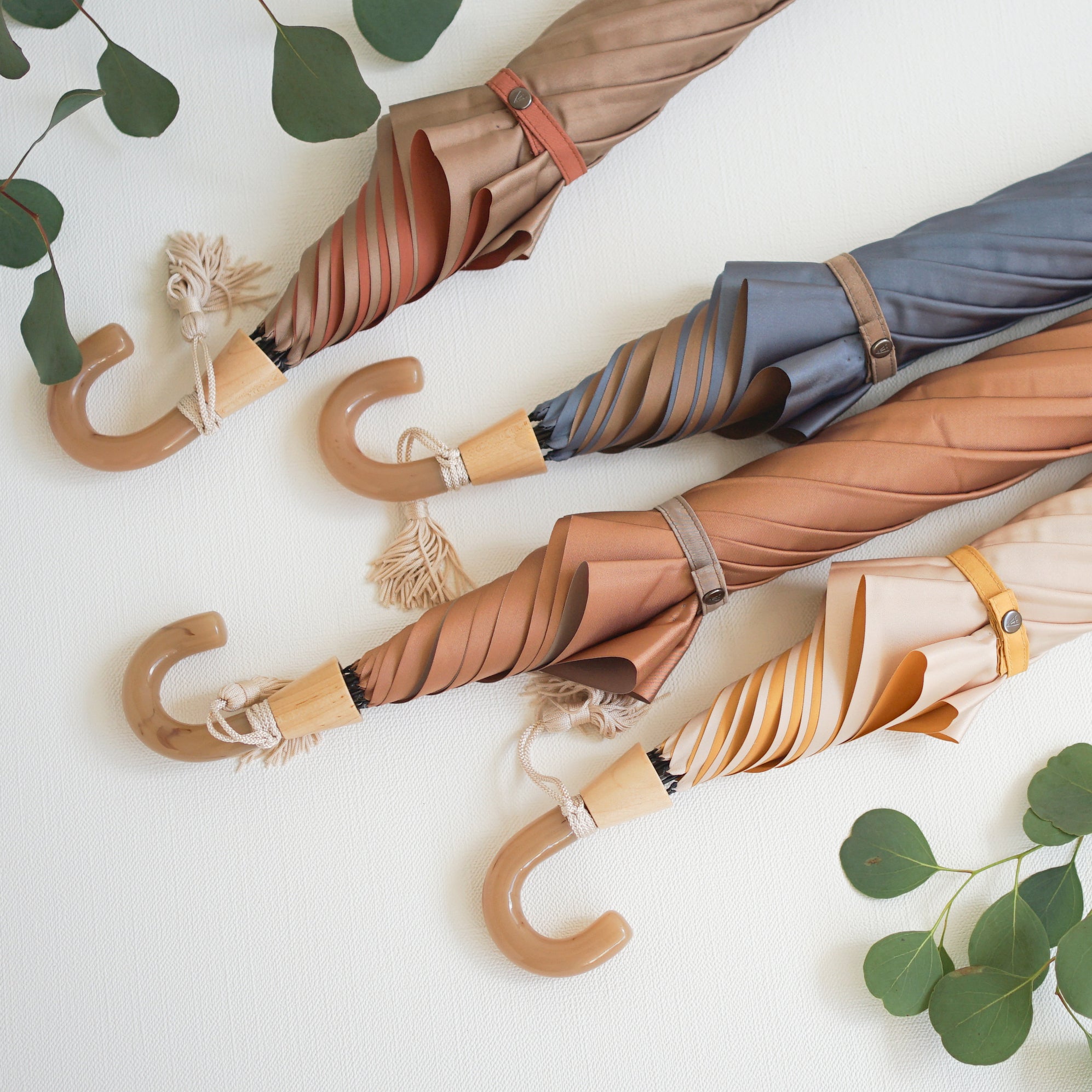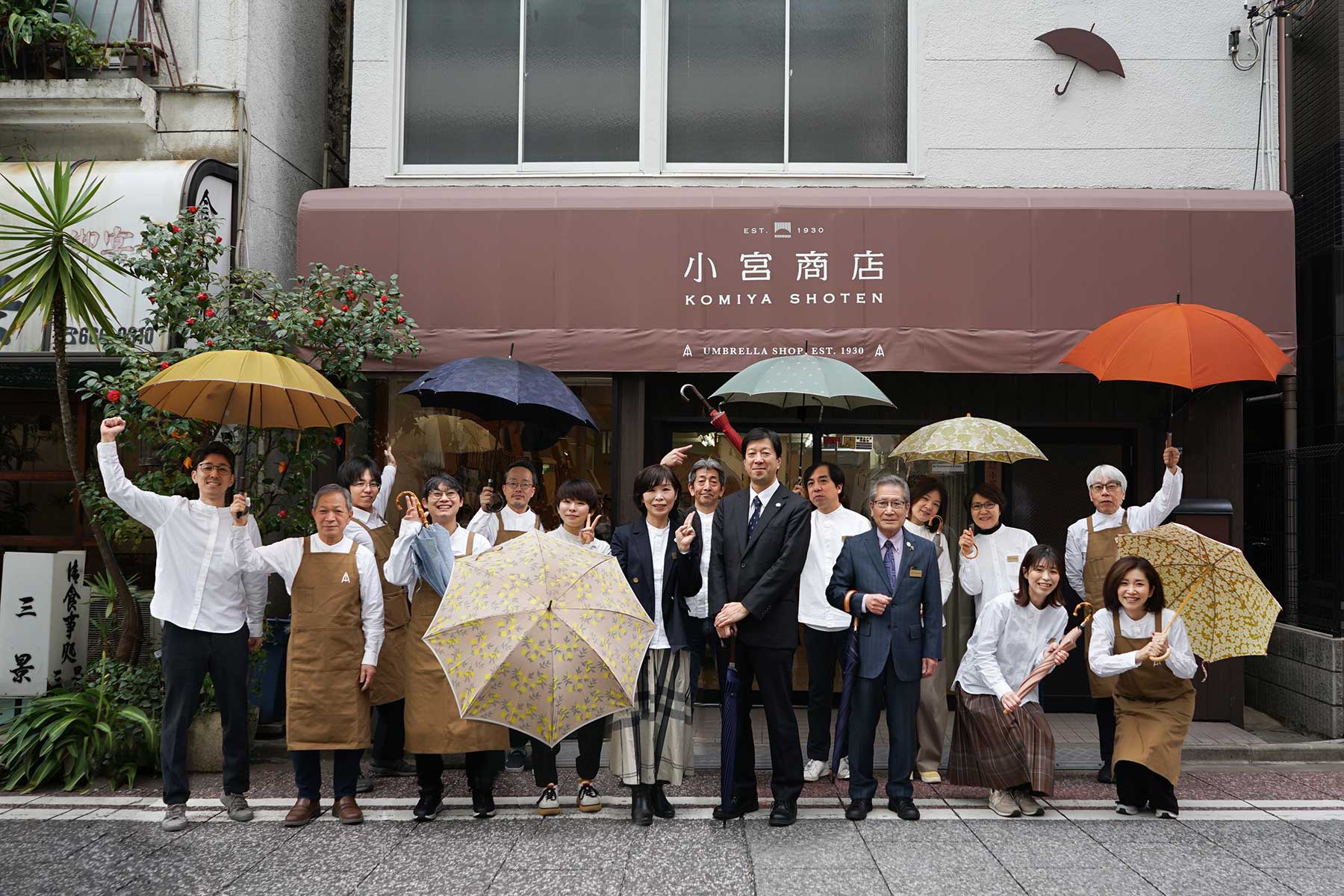A warm umbrella that reflects the craftsmanship of the artisan
Most of the processes involved in making umbrellas are done by hand.
In this age of mechanization, one might think that umbrellas are made automatically once they are put on the production line, but umbrellas are still products that require human hands at almost every stage of the process.
Therefore, it is a very delicate and complex process that ultimately depends on the experience and knowledge of the craftsman. Here, we will introduce the umbrella making process at Komiya Shoten, where such craftsmanship shines through.
1. Triangular cutting of the umbrella fabric

The fabric is cut to fit the wooden mold. This cutting process determines the shape of the umbrella, making it a very important process.
The cut triangles are called koma (pieces, koma). If you look closely, the pieces are not equilateral triangles, but rather have gentle curves on both sides, which creates the beautiful shape of the umbrella. The wooden molds used to make these pieces vary slightly depending on the craftsman, and for each craftsman, they are so important that they are said to be the "heart of the umbrella."
2. Inspection of the fabric

The links are inspected thoroughly by shining light on them to check for scratches or twisted threads. This is also called "see-through".
3. Middle stitching

Next, the frames are sewn together with a sewing machine according to the number of ribs. Even the slightest twist in the stitching is not permitted, and this requires highly skilled technique. This method involves sewing the frames together starting from the apex of the triangle, and is called "Kanto stitching." This method is more difficult than sewing together starting from the base of the triangle (the tip side), but the end result is beautiful. Once this stitching is complete, the frame is called a "cover."
4. Dowel winding and lathe winding

The joints between the bones are called "dabo" and wrapping them in fabric is called dabo-maki. If the dabos are left exposed, they will get dirty and rub against the fabric when they come into contact with it, so to prevent this, they are attached one by one. The part that holds the ribs together (the part that is pushed up when the umbrella is opened) is called the rokuro and is wrapped in fabric. This is called "rokuromaki".
5. Skyline

Now it's time to stretch the dough onto the bones.
First, the top is sewn. After putting the cover on from the base, as the name suggests, the top is sewn with thread. Umbrellas that are not properly sewn in this step will leak and become more likely to break.
6. Mouth-closing (kissing)

Sew the tip of the tent and the cover together.
The fabric is pulled while being sewn to ensure good tension. This is a task that requires delicate adjustments and skilled techniques.
(The tip of the cover is the part that joins the tip of the rib.)
7. Saddle stitching

This is the process of sewing the cover to the bones with thread and fixing it in place. Each bone is carefully sewn in two places. This is the most important step in the process.
8. Jinbasa and Chrysanthemum Seat

The waterproof cloth attached to the tip of the umbrella is called the "kikuza" and the cone-shaped device on the top of the fabric is called the "jinbaori," and these are attached.
All of these steps are taken to prevent leaks.
In particular, installing the jinkasa requires skilled techniques, as the size of the jinkasa must be narrowed to match the dimensions of the center pole and it must be crimped tightly so there are no gaps.
9. Attaching the handle

The last step is to attach the handle.
Shave the center rod a little to create a groove. This will make it harder for the handle to come off.
Wrap thread around it, apply glue, and attach it firmly and carefully.
10. Product Inspection

Once all processes are completed, the product is inspected as a product by Komiya Shoten.
Is it easy to open and close? Not only does the craftsman who made it look good, but Komiya Shoten's umbrella master also checks the quality of each and every item.
Western-style umbrellas are products that incorporate the handiwork of artisans in every detail.
"Chrysanthemum seat" and "Jinbasa" (battle hat), "tsuyusaki" (decorative tip) and "tengari" (covered ceiling)...
In this way, almost all parts and processes of an umbrella have been given impressive names. Because umbrella making has been done by hand since ancient times and has been a familiar part of our lives, the names, manufacturing methods, and feelings behind them have been passed down to the present day.


